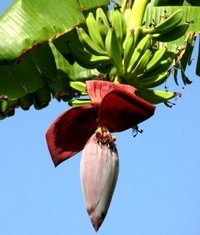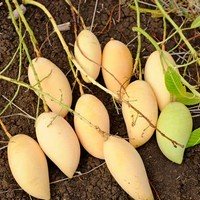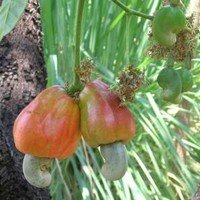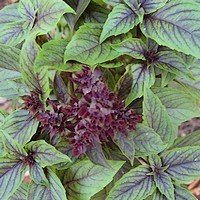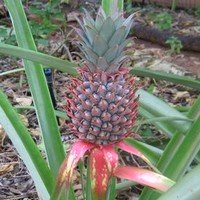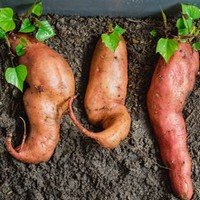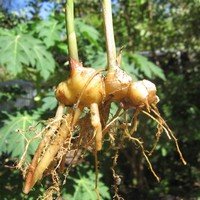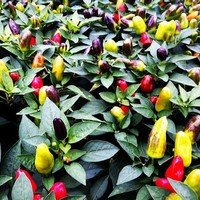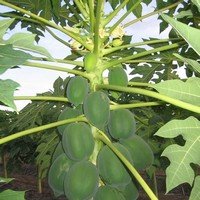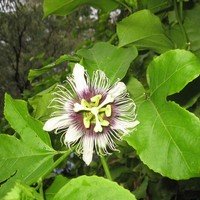About Me, About Growing Plants,
And About How This Site Came To Be
Growing plants has been a passion of mine for as long as I can remember. And not just growing them but also harvesting.
One of my earliest childhood memories is of me and my sisters out on the field that surrounded our house in the Bavarian countryside. We were collecting the tiny potatoes the harvesting machines had left behind. It was a big field and we got them all, I swear! It was me who had insisted we do this and I can still feel the satisfaction of gathering food in nature and contributing to the feeding of our family.
Mind you, while we weren't rich, we also weren't starving or anything. Nobody had asked me to do that or even suggested it was a good idea. My father had to build some storage boxes for my potatoes, and my mum had to peel countless of those tiny things for weeks and weeks to come. (Back then you did not eat potatoes with their peel, ever!) Trust me, they both would have preferred to just get normal, big potatoes from the supermarket.
When my parents divorced and we moved to suburbia with our mother, I had to bring the plants inside. My bedroom turned into a greenhouse rivaling those in any botanic garden. The resulting humidity also made the wooden window frames swell and the wallpaper go soggy and peel off. Again, my mum coped.
Science was and is my second passion, and my first career wish was to be a researcher in the Amazon. Or something like that. Instead I studied biochemistry and then I moved to Australia.
Moving To A Tropical Climate
Long story. I had always wanted to leave Germany, and my biologist boy friend accepted a position at Melbourne University, and then he dumped me, but because it was only a few days before my much anticipated flight, I went anyway. He was in Melbourne, so naturally I settled at the other end of the continent, in the tropical north. (The Kimberley region, to be precise.)
And that's when the whole food growing thing started to get serious. In the beginning I only had a tourist visa so to support myself I did what all backpackers do: Fruit picking. Harvest work. Whatever you want to call it.
The north was my base but I travelled all over the country, following the seasons, picking apples and grapes, onions and avocados, peaches and strawberries, and, at home in the Kimberley, melons and mangoes and citrus and bananas.
Over the years this led to more permanent positions and much more insight into those horticultural operations. And where initially I was just doing it for the money, I now also started asking lots and lots of questions and reading voraciously about all things horticulture. My last paid position was on an diverse, mostly organic farm and market garden, owned and run by two researchers from the local Department of Agriculture. Growing anything and everything and talking plants and science all day long. Life doesn't get any better than that!
Discovering Permaculture
And that was when I came across a book by Bill Mollison. Or rather, THE book by Bill Mollison, called Permaculture: A Designer's Manual.
My house mate had given it to me, saying he didn't like it. I started reading and a whole Christmas tree of lightbulbs went on in my head. This made sense. A whole lot of sense!
I read more and more, everything I could get my hands on, started experimenting in my own (rented) yard, and eventually bought my own 5 acre bush block. Naturally, I developed it along permaculture principles.
And that was almost 20 years ago.
So there you have it. That's my background and experience when it comes to growing fruit, vegetables, herbs and other useful plants: Backyard gardening, biochemistry, commercial horticulture, agricultural research, permaculture... I'd say it's a solid foundation, don't you think?
About This Website
These days I am self employed and earn my money online. Most of my income comes from my websites about the Kimberley region and about climbing Mount Kilimanjaro.
This website on the other hand I wrote and write just for the love of the topic. It earns a little money as well. (Sorry about the ads plastered over it, I hope they don't distract from the content. A girl has to live and every little bit helps.)
Having an online business means I can work from anywhere in the world. After having spent 18 years in tropical Australia, I moved back to Europe, to be closer to my family.
These days I live on a large property in Tyrol in Austria. Totally different climate, but permaculture principles work just the same. And I enjoy growing lots of fruit, herbs and vegetables again that I could not entice to grow in the tropics.
Do I miss the mangoes and passionfruit? I could, if I wanted to think that way. But I don't. I am delighted that I can grow pears and apricots and nectarines and raspberries. (Which I had chosen not to miss while living in the tropics.)
Right now there is mostly info on tropical plants on this website. But naturally, in the future, I will also be adding information on growing plants in a temperate climate.
And I suggest you take my approach. Wherever you live, don't work against nature, against permaculture principles, don't be hellbent on growing something that was never meant to grow there or complain about not being able to grow this or that.
Grow the things that are best suited to your climate and soil and be delighted about them. Both the environment and your pantry will thank you for it. Trust me. Trust permaculture. It makes sense. A whole lot of sense.
I hope your gardens will always grow well and wish you a bountiful harvest!
Birgit
